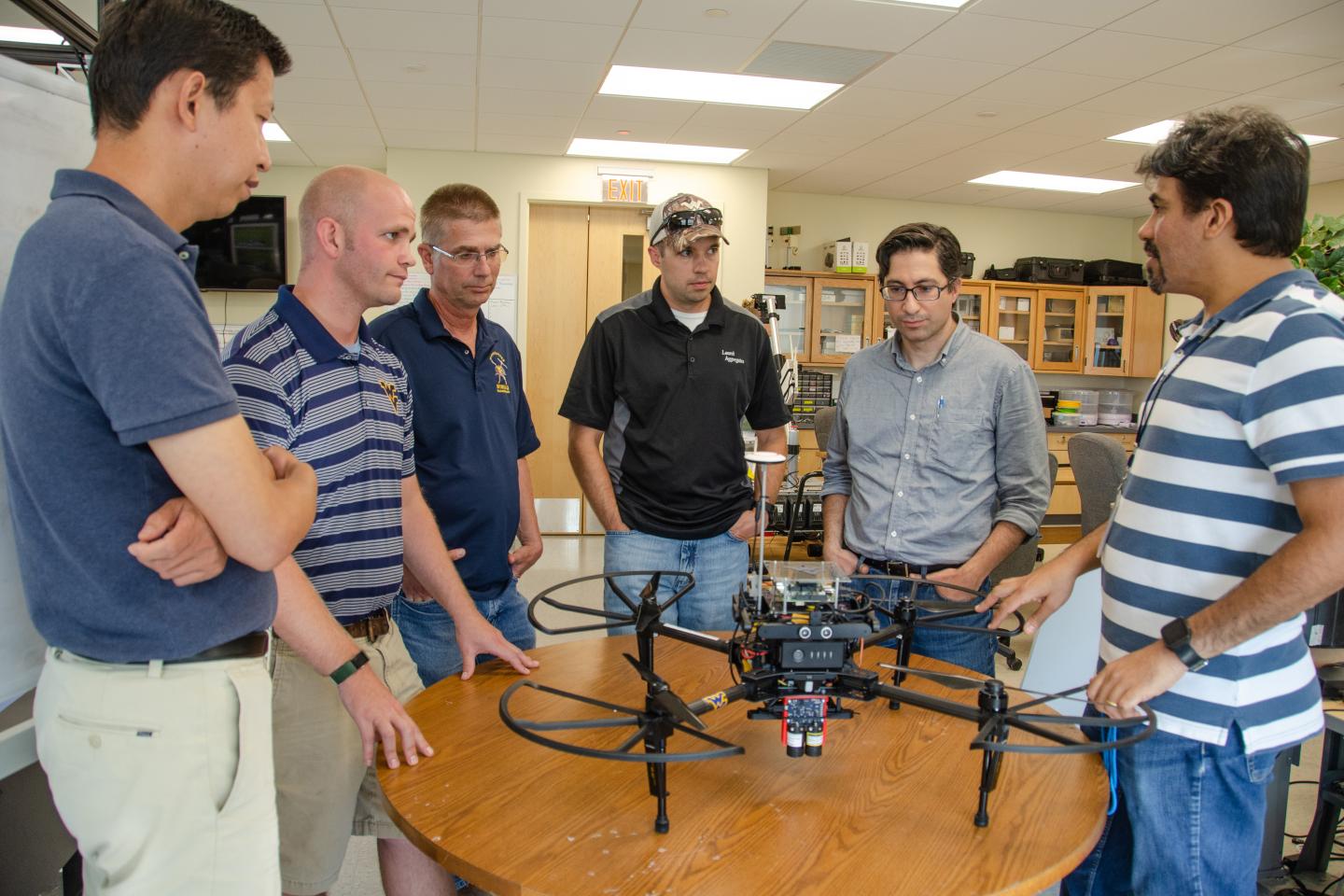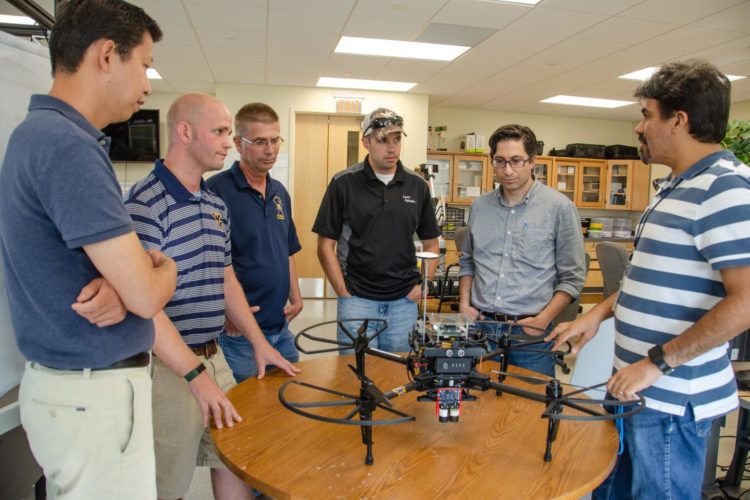
Credit: Paige Nesbit/West Virginia University
Injuries and deaths caused by roof collapses and falling debris, common culprits for underground mine accidents, could be prevented by the unlikely force of robots and drones, thanks to the work of West Virginia University engineers.
Ihsan Berk Tulu, assistant professor of mining engineering, along with Jason Gross, Yu Gu and Guilherme Pereira, from the Department of Mechanical and Aerospace Engineering, are developing an autonomous robotic system to monitor the structural integrity and safety of underground mines.
By using a combination of remote vehicles that consist of an unmanned aerial vehicle attached to an unmanned ground vehicle, the team will provide high-resolution 3D maps for assessment of pillar and roof damage.
The researchers were awarded a $750,000 grant from the Alpha Foundation to conduct this research on the health and safety of underground miners.
“Ultimately, this project will develop an early warning system that will notify the mine engineers for elevated hazardous conditions in underground stone mines,” Tulu explained.
According to Tulu, in underground mines in the United States, “fall of ground”-related accidents are one of the leading causes of injuries. This occurs when part of the roof or a pillar collapses. Although underground stone mines have generally experienced good ground stability, a recent mine pillar collapse in Whitney, Pennsylvania and reported roof fall accidents in other mines highlight the potential safety impact on the miners.
“The autonomous robotic early warning system for monitoring stone mines will enable a rapid response to detected degradations in pillar and roof stability,” Tulu said. “Successful development and deployment of this system is expected to reduce injuries of underground stone mine workers.
“While the initial problem is associated with pillar stability and design, the techniques developed in this research would be easily adaptable to the underground coal and metal/nonmetal mining sectors,” said Tulu. “The autonomous robots mapping ability would also be adaptable to facilitate search and rescue efforts in case of an accident.”
The researchers will leverage similar technology to what is currently under development for underground tunnel rescue operations by the WVU robotics team to develop the robotic system. The system will then be deployed to Laurel Aggregates underground stone mine in Lake Lynn, Pennsylvania, for testing.
Located a few miles north of Morgantown, Laurel Aggregates is a large surface and underground limestone quarry operation which produces approximately three million tons of construction aggregates per year. Manager of Operations and Engineering Richard Rohrssen, Vice President and General Manager Barry Fink and Underground Superintendent Brian Cramer are leading the effort for Laurel to support the WVU research team. Rohrssen (’09, civil engineering) and Fink (’82, mining engineering) are both graduates of the Statler College. “As WVU engineering graduates, Barry and I are excited to be supporting the WVU team in their effort to develop this technology,” said Rohrssen.
“Miners’ safety is a No. 1 priority in the mining industry,” said Vladislav Kecojevic, the Robert E. Murray chair and professor of mining engineering. “Research grants such as this one from the Alpha Foundation will allow our WVU engineers to leverage state of the art technology into an underground environment and contribute toward an ultimate goal of zero fatal- and non-fatal injuries in our nation’s mines.”
The Alpha Foundation for the Improvement of Mine Safety and Health is a private foundation with the mission to improve mine safety and health through funding research and development projects at qualified academic institutions and other not for profit organizations.
CONTACT: Paige Nesbit
Statler College of Engineering and Mineral Resources
304.293.4135; [email protected]
Call 1.855.WVU.NEWS for the latest West Virginia University news and information from WVUToday.
Follow @WVUToday on Twitter.
Media Contact
Paige Nesbit
[email protected]
304-293-4135
Original Source
https:/





